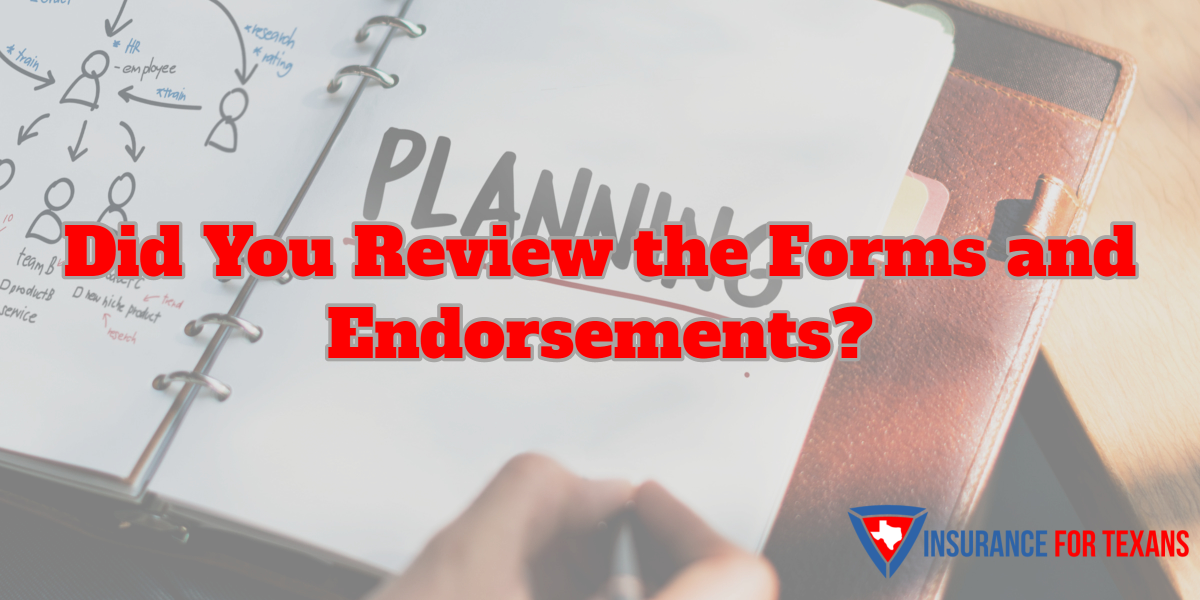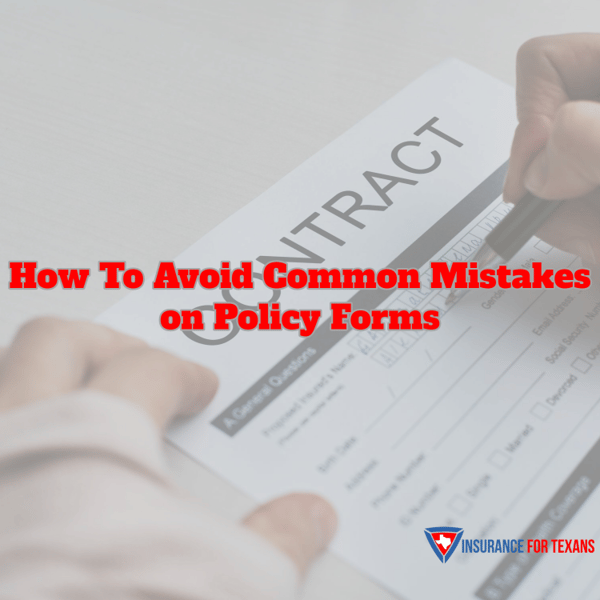No matter if it is your first time shopping for an insurance policy for your Texas business or your hundredth, there are some rules that you need to follow when making a change. Every commercial insurance proposal and policy comes with a list of policy forms included as a part of the policy. These forms are what defines the coverage that you do and do not have for your business. In most instances you don’t have a full copy of all the forms until the policy is printed and delivered, which can be weeks after the coverage starts. So the question for any business owner becomes how can you determine what is and is not included with your new policy?

Forms And Endorsement Page
The first place to start is to review the forms and endorsements page of the proposal and then subsequent policy jacket. Every carrier provides a forms and endorsements list which is available to the client and should always be provided to you when being offered a proposal. If the agent providing you with a proposal does not include a copy of the forms and endorsement page, request it. Most commercial insurance proposals give you a snapshot of the types of coverage and the limits of each coverage. But that forms and endorsements page(s) give you a description of what some of the forms the policy will include. What most business owners fail to understand is the policy coverage lives and dies on the forms and endorsements page. You might think you have coverage, but a separate form you were unaware of takes away all of the coverage or limits it drastically. So let's take a look at some examples...
Let's Look At A Common Mistake On Policies For Roofing Companies
Roofers can work on both residential and commercial projects in Texas. For commercial projects it is common for roofers to use hot tar for resurfacing on flat roofs. Looking at the policy limits they assume that they have $1,000,000 in liability coverage. The issue is without reviewing the forms and endorsements page they would never know that hot tar work was excluded. If the building was to burn down as a result of their negligence there would be no coverage as hot tar was excluded from the liability. The business owner would never know this without looking at the Forms and Endorsement page.
Let's Look At A Common Mistake On Policies For Building Owners
If you own an older commercial building, there are needs that change. The owner obtains a proposal with the building limits and deductibles and everything looks great so the policy is purchased. It was way cheaper than the prior year’s policy, so why wouldn’t he? Before that full policy is delivered a hail storm rolls through and damages the roof. As any normal building owner would, they do what they think is best and call the carrier to file a claim for that hail damage.
When the claim is settled and the adjuster cuts the check the amount paid by the carrier is half of what the roof costs to replace. What the building owner didn’t realize is even though the limits looked right on the proposal, hidden in the forms and endorsements page was a roof limitation endorsement. This endorsement limited his coverage to depreciated value on the roof and not full replacement cost.

What Can A Business Owner Do?
As you can see, just because the limits on a proposal look adequate the coverage may not be all that it appears. You always need to review the Forms and Endorsements page of the policy with your agent. Be insistent that they provide you with a copy. Especially on a new policy purchase. If you have any questions about one of the form descriptions, ask them for a copy of the form to review. If it doesn’t look or sound right to you, always question it. Reviewing these forms can make the difference between a quality policy or a thousand-dollar stack of paper only good for starting a fire.
1. Always ask for a copy of the forms and endorsement pages.
2. Review the descriptions of each form.
3. If it doesn’t sound right as for a copy of the form to review.


